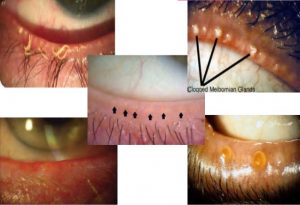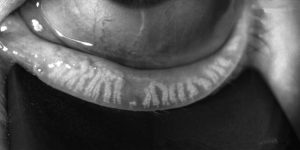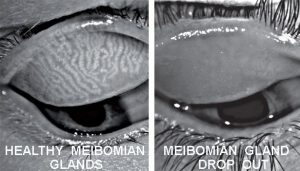DRY EYE EXPLAINED
Dry Eye is a prevalent yet under-diagnosed disease ranging from mild to severe, episodic or chronic. Episodic dry eye can be due to external factors, whereas chronic dry eye can be a progressive disease with underlying issues of inflammation and altered tear composition. Various patients’ have a high incidence of dryness and should be diagnosed and managed early prior to serious issues arising. Dr. D’Orio Eyecare has developed a novel dry eye clinic in Toronto to diagnose patients early and start the appropriate dry eye therapy. The Toronto Dry Eye Clinic uses the latest technology for any dry eye specialist to accurately determine the root cause of the symptoms. Dry eye is a multifactorial disease characterized by tear film instability, ocular surface inflammation and damage. The disease is separated into aqueous deficient dry eye (insufficient tear production) and evaporative dry eye; however, they can occur simultaneously (also known as mixed-mechanism dry eye). It is important for a dry eye doctor to perform a dry eye workup to determine the type of dry eye a patient has.
The dry eye assessment needs to be completed on a separate day from the regular eye exam appointment; since the validity of the test used during the workup will be impacted by the dyes and drops used for a regular eye exam. On the day of your workup, the dry eye doctor will run through a series of quantitative and qualitative tests to gather data for the questionnaire, osmolarity, MMP-9, tear film stability, Meibomian gland imaging, and slit lamp examination. At the end of the assessment, the dry eye doctor will explain and diagnose the type of dry eye, as well as the best course of dry eye therapy regimen required to prevent exacerbation of the disease. Book an appointment with us today to determine if you require dry eye therapy.
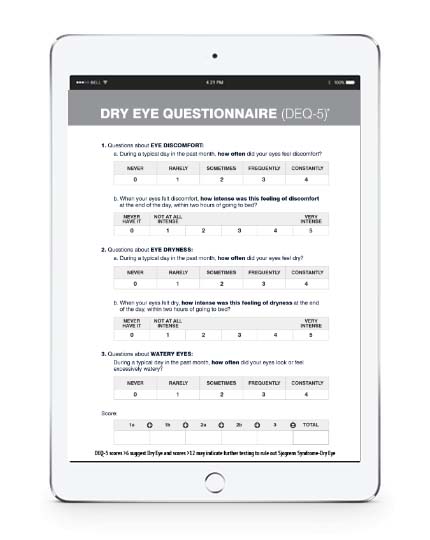
QUESTIONNAIRE
Download this Questionnaire to better determine if you suffer from dry eye.
DEQ-5 scores >6 suggest Dry Eye and scores >12 may indicate further testing to rule out Sjogrens Syndrome-Dry Eye.
HOW ARE DRY EYES DIAGNOSED?
INFLAMMADRY
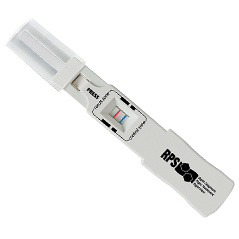
InflammaDry is the first and only, rapid result, in-office test that detects elevated levels of MMP-9, an inflammatory marker that is consistently elevated in the tears of patients with dry eye disease. All other dry eye tests measure tear production and stability.
Using a simple 4-step process, InflammaDry recognizes elevated levels of MMP-9, to identify patients that may otherwise be missed with other dry eye testing methods.
ANTARES S40PTIK
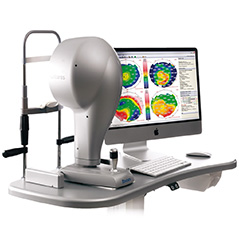
ANTARES new corneal topographer with advanced tear-film analysis. Boasts a new high resolution digital colour camera and advanced algorithms, to bring you user friendly, full featured Corneal Topographic data, TBUT analysis, as well as MGD analysis.
Features:
- Corneal Topography
- Contact lens fitting with Autofit
- Keratoconus screening with classification
- Dynamic view of non-invasive break-up time
- Tear Meniscus Height Imaging and Measurement
- Interference Pattern Imaging of Lipid Layer
- Imaging of the Tear Film Dynamics (Video)
- Fluorescein Imaging
- Meibomian Glands Imaging and Analysis
TEARLAB
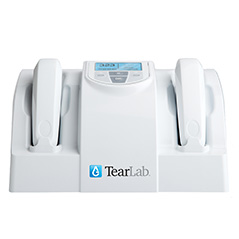
TearLab is an objective and quantitative point-of-care diagnostic test that provides precise and predictive information.
The TearLab Osmolarity System* is intended to measure the osmolarity of human tears to aid in the diagnosis of dry eye disease in patients suspected of having dry eye disease, in conjunction with other methods of clinical evaluation.
*TearLab is for professional in vitro diagnostic use only.
THE LATEST TECHNOLOGY TO TREAT DRY EYES
BLEPHEX
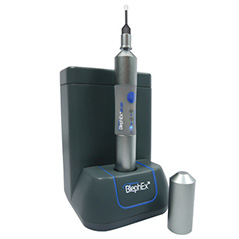
BlephEx is a revolutionary new patented hand piece, used to very precisely and carefully, spin a medical grade micro-sponge along the edge of your eyelids and lashes, removing scurf and debris and exfoliating your eyelids.
BlephEx is a very useful addition to the lid hygiene / dry eye armamentarium. The device effectively clears debris from the lashes and lid margins and to my surprise contributes to down-regulating inflammation along with a subjective improvement in symptoms.
ILUX
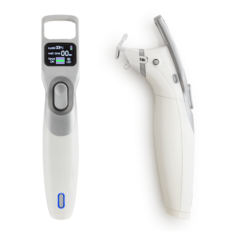
The iLux is a handheld portable device that is used for treating dry eye disease. It treats dry eye disease that is associated with meibomian gland dysfunction by using light-based heat and compression, under direct visualization by the physician under a magnifying lens. The sterile, single-use, iLux Smart Tip has an inner pad that slips behind the eyelid being treated and an outer pad that’s pressed against the outer surface of the eyelid during heating and compression; the tip contains temperature sensors that maintain safe, therapeutic heat levels during treatment. This treatment help by opening or unclogging the meibomian gland orfices so oil can be expressed passively after every blink.
E > EYE
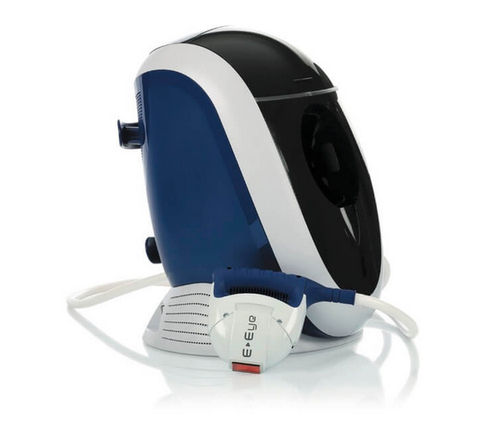
The E-Eye is a device that generates a new type of polychromatic pulsed light by producing perfectly calibrated and homogeneously sequenced light pulses. The sculpted pulses are delivered under the shape of regulated train pulses. The energy, spectrum and time period are precisely set to stimulate the meibomian glands to improve their function. The proposed mechanism of action of this is neurological. Localized treatment is directed at the lower eyelid and the lower arcades of the parasympathetic nerve. Infrared nerve stimulation induces a “return to normal” activity of the meibomian glands. Treatment improves meibomian gland function and reduces the inflammatory cascades.



